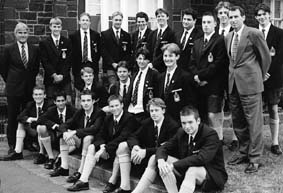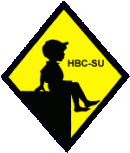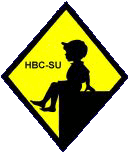
Figure 3.--Australian private schools through the 1970s and into the 1980s often required all boys, even the older boys, to wear blazers, ties, short pants, and kneesocks. A few private schools still do. |

HBC has much more information about Australian school uniform in the 20th century. Australia had an extensive school system throughout the 20th century modeled on the British system. At the turn of the 20th century, nearly all Australian children, except for the Indigenous children, received at least 5 years of basic primary schooling. Each of the Australian colonies had established and consolidated public mass, compulsory public education. As the century progressed, the period of schooling steadily incensed and schooling was made available to th Indigenous children. Many teachers during the 19th century were trained in Britain. This had become less common in the 20th century, but still occurred, especially in the early part of the century. Education was impacted by the austerity of world wars and the Great Depression, but thee was a stead trend of expanding the system and increasing he level of compulsory education. The system was mostly a primary system during the first half of the century. It wasn't until after World War II that the country began to significantly expand the secondary system. We also see a move toward coeducation after the War. We also begin to see uniforms at primary schools. The principal exception was private schools where uniforms were worn. Many mothers purchased school items modeled on British schools attire. Australian children at the secondary level generally did wear uniform at the secondary schools in the 20th century. This meant the same uniform styles worn in Britain. School uniforms look very British at the beginning of the 20th century, except that many Australian children, both boys and girls, went to school barefoot. This basic trends continued until after World War II. After the War more casual uniforms gradually began to appear. Some private schools retained traditional British uniforms. Many state schools shifted to more casual styles that seem better suited ti a country with a warmer climate. Also we begin to see fewer children going to school barefoot, especially at urban schools.
We note numerous Australian school photographs from the early- 20th century. The boys look much like English boys, so much so that it is difficult to distinguish them, although th background some times suggests the location. We note both schools that wore uniforms and others that do not. Early in the century some boys wore sailor suits. Peaked schoo caps and flat caps were common. In Britain the peaked cap was much more common than the flat cap. And we note a few boys wearing boaters. Eton collars were very common until after the War. Boys wore suits to scjhool, but not necesarily uniforms. Norfolk suits were popular. Boys commonly wore knee pants and knickers, except for some of the older boys at secondary schools. Many boys went barefoot, especially at the primary schools. This was in part seasonal. Boys were more likely to wear long stockings snd sure during the coller months.
We no longer see boys wearing sailor suits to school after World war I. As in England, short pants were very common, perhaps becuse of the climate which was much warmer than England.
We continue to see Australian boys wearing British-style school uniforms in the 1930s. The peaked school caps were becoming more standard, but we see various styling. Some boys wore boaters, but mostly private schools. We see more boys wearing uniforms, both blazers and jackets. We see some destinctive blazers as in Britain, mostly at private schools. Grey shirts and sweaters were very common. Most boys wore short pants. Australian uniforms were very similar to British uniforms, except for footwear. Going batefoot was quite common, especially for the younger children. Shoes and kneesocks were also worn, especially during the cooler months. Another difference with the British, was that boysd did not very commonly wear sandals, although girls did. Sandals had become very populr for scjhool childten in Britain, but not in Australia. The fact that so many Australian children went barefoot was presumably a factor. We no longer see boys wearing long stockings, but some girls did.
Australian schools continued to use English school uniforms through the 1950s. Even more so than English boys, Australian boys wore short pants school uniforms. Even at secondary schools short pants were common. Some schools, both state and private schools to wear short pants. Despite the warm climate in Australia, boys commonly wore blazers and kneesocks. Caps were also common and we note various styles.
Major cganges began to take place in Australian school uniforms during the 1960s. Some primary schools, as in England began to adopt simple uniforms. The boys wore short pants and kneesocks. The secondary schools continiued to wear English school uniforms. Caps went out of style in the 1960s and blazers were less commonly worn. Boys, even older boys, continued tomwearvshort pants and kneesocks. This differed from England where older boys no longer wore short pants school uniforms, except for a few traditional private schools.
|
The 1970s as was the case in many Western countries was a tumltuous decade. We see major social and technological changes. This created an environment for a new look at education and and thus condusive for educational reform. This encouraged a range towards progressive ideas and experimentation in education. There was rising public interest in schools, picked up by the media. There was a discussiomn as to what schooling is. Thiscreslted in new political policies and government initiatives. We begin to see increased interested among parents and even students, to participate in school rule and policy-making. Teachers showed an invreasing interest in experimenting with new teaching methods. Perhaps more than anything there was less less formality and more casual classroom approaches. This was a natural develop following from the unrest of the 1960s. An additional factor in Australia was changes in previously very restrictivee immigration laws. This brought a diversity of new values and outlooks to Australia's previously highly provincial society. One education historian writes abouy, "Greater emphasis on personal choice, tolerance of differing viewpoints, closer human relationships, and the development of self-discipline and self-responsibility are trends in the wider society which have been finding some parallels in the thinking and approaches of educationists, teachers, parents and students. New educational structures to incorporate such trends have been and are being sought in the present decade. Some groups of parents and other citizens have set up their own schools as a direct result of dissatisfaction with existing structures." 【Bambach】 The Labour Party which won the 1972 election, introduced a broad range of reforms.
|
Notable changes in Australian school uniform occurred during the 1980s. Many changes more in tune with the Australian climate were introduced during the 1980s. Many casual styles replaced the more formal English styles. Blazers and ties became increasingly less common. More older boys began wearng long pants to
school. Many schools introduced seasonal uniforms with long pants during the winter and shorts during the summer.
Bambach, J.D. "Australia in the 1970's: A fertile context for educational experimentation and innovation,"
Australian Journal of Teacher Education, Vol. 4, No. 1 (1979), pp. 22-29.
Related Chronolgy Pages in the Boys' Historical Web Site
[Main Chronology Page]
[The 1880s]
[The 1890s]
[The 1900s]
[The 1910s]
[The 1920s]
[The 1930s]
[The 1940s]
[The 1950s]
[The 1960s]
[The 1970s]
[The 1980s]
[The 1990s]
[The 2000s]
Related Style Pages in the Boys' Historical Web Site
[Main country page]
[Long pants suits]
[Short pants suits]
[Socks]
[Eton suits]
[Jacket and trousers]
[Blazer
[School sandals]
Navigate the Boys' Historical Clothing School Uniform Pages
[Return to the Main Australian school chronology page]
[Return to the Main school uniform country page]
[Return to the Main school uniform page]
[Australia]
[England]
[France]
[Germany]
[Italy]
[Japan]
[New Zealand]
[Scotland]
[United States]
Navigate the HBC School Sectionm
[About Us]
[Activities]
[Chronology]
[Classrooms and buildings]
[Clothing styles]
[Countries]
[Debate]
[Economics]
[Garment]
[Gender]
[Hair]
[History]
[Home trends]
[Literary characters]
[School types]
[Significance]
[Transport and travel
[Uniform regulations]
[Year level]
[Other topics]
[Images]
[Links]
[Registration]
[Search]
[Tools]
[Return to the Historic Boys' School Home]
